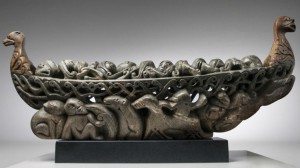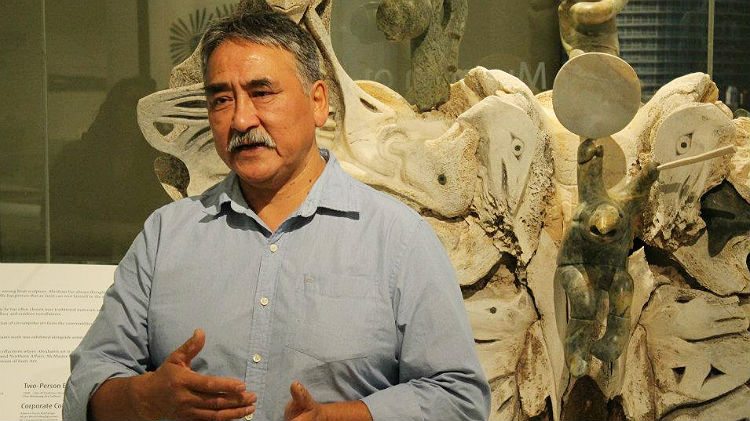A new sculpture exhibit opens at Yellowknife’s Prince of Wales Northern Heritage Centre on Thursday.
Inuvialuit artist Abraham Anghik Ruben, a former Yellowknife resident, unveils his Aurora Borealis exhibit at a reception from 7pm.
Ruben says his work in the exhibit draws on the contact made between Viking and Inuit peoples a thousand years ago.
“Since 2004, I’ve been involved with the study of the Inuit and the Norse in Arctic Canada and Greenland,” Ruben told Moose FM.
“I’ve done extensive studies on Scandinavian and Germanic myths, legends, stories and sagas – especially the Bering Sea Inuit, who left their homelands with the coming of an Arctic warming period, culminating in their meeting with the Vikings in Greenland about a thousand years ago.
“There was a time when both the Inuit and the Vikings carried and practised similar beliefs. They believed in the spirit of the place. They had a shared belief in the reverence of all living things – that all living things were imbued with a soul, that there was a protective spirit to a place.”
Event details: Aurora Borealis exhibit opening
Ruben lived in Yellowknife between 1975 and 1980, a period he describes as his “formative years” as a sculptor.
Prior to that, he learned his trade in Fairbanks, Alaska, having grown up in Paulatuk and Inuvik.
“I’ve spent the last 40 years basically on the road,” he told us. “I can say, with all honesty, that it’s only been in the last 10 years that I feel I’ve matured as an artist, that I’ve felt I have a grasp of what I’m doing.”
After a decade studying the beliefs of the Vikings and Inuit, Ruben feels they have a message for people in the 21st Century.
“The sculpture in the exhibition deals with Viking mythology, legends, the North Atlantic sagas, and the Inuit myths and legends they brought with them from Alaska to Greenland,” he said.
“What I see coming full circle today is the climatic shifts that caused that migration, a thousand years ago, are unraveling themselves again today. Changing our climate is going to hit harder, faster, and longer, and we’re living it.
“The stories that took place a thousand years ago still resonate today.
“We should be able to look back and draw from those traditions, because it’s those traditions and ancient beliefs that in the end we might have to come back to, to save ourselves.”




